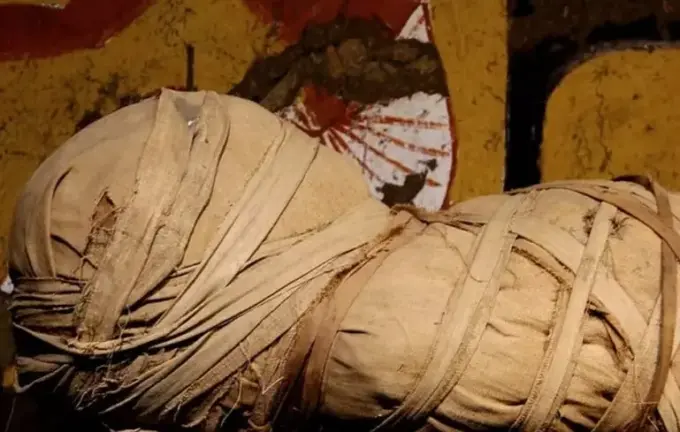Archaeological Breakthrough: 2000-Year-Old Sarcophagus Discovered Near Naples, Astonishing Researchers with Preserved Mummy

In the outskirts of the renowned Italian city of Naples, archaeologists made a groundbreaking discovery by uncovering a 2000-year-old sarcophagus remarkably well-preserved.
This find has sparked significant interest among researchers and scholars, as such well-maintained mummies and burial artifacts from this period are extremely rare.
According to the Department of Archaeology, Arts, and Landscapes of the Naples region, the team led by the famous archaeologist Simona Formola was able to finally access the sealed tomb, known as the “Tomb of Cerberus.” Located in the town of Giuliano, near Liternum, the burial site surprised scientists with its exceptional state of preservation.
Inside, they found the body lying face-up, covered by a well-preserved shroud.
Surrounding the corpse were jars containing ointments and tools used for body cleaning — essential components of ancient funeral rituals.
Experts confirm that the mummy remains in excellent condition, a rare occurrence for such ancient excavations.
This discovery provides new opportunities to study ancient burial practices, ritual details, and social hierarchies of the era.
Laboratory analyses have already shown that the mummy’s preservation is due to the microclimate within the tomb and ancient embalming techniques.
Researchers are also analyzing the structure of the textile wrapping and residual organic substances to gather additional insights into the social status and cultural characteristics of the interred individual.
Future studies include genetic analysis of the remains and chemical examination of organic compounds found within the sarcophagus, including residues of creams made from marijuana and absinthe, which likely hindered decay and preserved the body.
The Ministry of Culture of Italy reports that further investigations may reveal more about the social and economic fabric of the region two millennia ago.
This discovery not only enriches our understanding of ancient civilizations but also highlights the importance of archaeological excavations in preserving cultural heritage.
Additionally, scientists have discovered that the mummy’s shroud contains traces of compounds used in embalming, suggesting advanced techniques that predate many known practices.
In the future, comprehensive analysis of organic materials and DNA will deepen our understanding of the social structure and ethnolinguistic identity of the buried individual.
Experts believe that this excavation marks just the beginning of a broader exploration of the ancient history of the area, with new findings potentially reshaping our knowledge of past cultures, rituals, and technological advancements.

